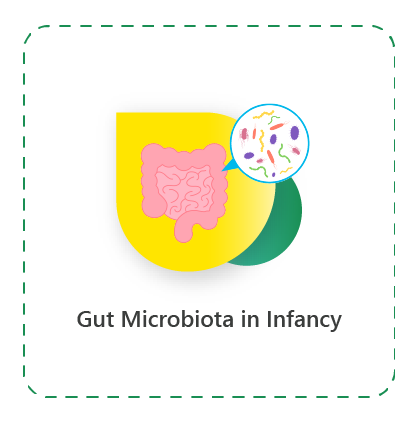Welcome to the Focus Module
"Gut Microbiota in Infancy"

Introduction
The term microbiota can be defined as all the microorganisms (bacteria, archaea, fungi, viruses and protozoa) that inhabit the tissues and organs of an individual (Miko et al., 2022). When exactly is the microbiota established? It still remains a subject of controversy. However, there is a consensus that the human microbiota undergoes considerable development during childbirth. In addition, during the first 2 to 3 years of life, it is shaped and then continues evolving, adapting to its host throughout its lifetime. These microorganisms permanently and closely communicate with their host, and aid in the development of multiple systems and physiological functions of the individual, ultimately promoting and modulating health. Examples of such functions include significant support to the development and maturation of the immune system, development of the nervous system, and the gut-brain axis, among others. The balance of this microbial ecosystem is also known as eubiosis (Iebba et al., 2016).
In contrast, the disturbance of the balance of this microbial ecosystem by intrinsic and extrinsic factors is known as dysbiosis (Iebba et al., 2016). This alteration has short- and long-term consequences in health that have been correlated to multiple non-communicable diseases including, but not limited to, allergy and metabolic diseases, such as obesity and diabetes mellitus. Given the significant impact on health and disease, it is crucial to understand the characteristics and dynamics of the early life microbiota as a potential tool to enhance health and prevent disease, which will be the focus of this module.
Course Content

Free of charge

Available worldwide

Targeted to healthcare professionals and researchers
Certificate of Completion

Final knowledge multiple-choice test must be successfully passed

All elements in each unit must be marked complete


